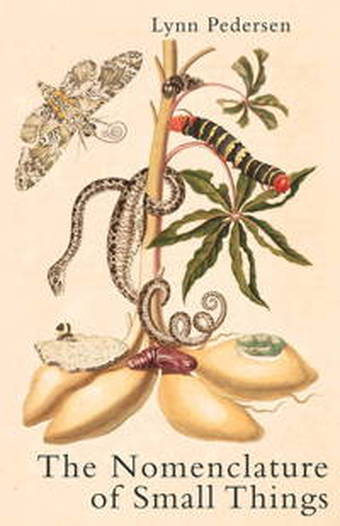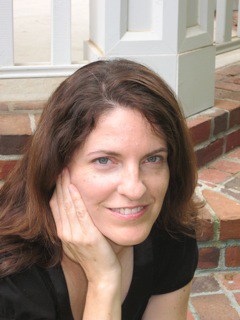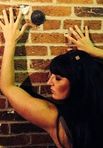Carpe Noctem Book Interview With Lynn Pedersen
 Carnegie Mellon University Press, 2016 THINGS WE’RE DYING TO KNOW…
Carnegie Mellon University Press, 2016 THINGS WE’RE DYING TO KNOW…Let’s start with the book’s title and your cover image. How did you choose each? And, if I asked you to describe or sum up your book, what three words immediately come to mind?
The press designed the cover for me and I had input on the image. Carnegie Mellon was very accommodating because when I say I had input, I described the botanical print theme that I wanted down to the insects that could/couldn’t be included. I said yes to snakes, lizards, beetles and moths, but no ladybugs, dragonflies or butterflies. The book has a strong survival/extinction theme to it, and I did not want the cover image to be too cute—more “eat or be eaten.” The print is from the Getty Museum.
The title was inspired by Linnaeus and his work with taxonomy. I wrote the science-themed grief poems first, poems that contained astronomy metaphors, telescopes, the vastness of space, and later I wondered about small things—microscopes and Robert Hooke’s work and tiny organisms and cells and objects we can't see.
Three words to describe the book: science, grief, pattern. If I could add three more they would be: fossil, extinction, endure.
What were you trying to achieve with your collection? Tell us about the world you were trying to create, and who lives in it.
In the early stages, I didn't have a master plan for the book. I was interested in the patterns of grief I recognized during years of fertility issues, and I felt compelled to try to express those experiences—though there isn’t a good vocabulary for grief in today’s English language.
The controlling hypothesis or goal—if I can call it that—was to see if the language of science can be used as a filter for grief. Many people and voices inhabit this book—Charles Darwin, Alexander Wilson, Robert Hooke, naturalist George Shaw, J.M.W. Turner. Geologic time in the book moves from the Precambrian to the Anthropocene. I’d describe the world of the book as rich and historical, exploring individual narrative against a larger backdrop of science and society.
Can you describe your writing practice or process for this collection? Do you have a favorite revision strategy?
I function like a hunter-gatherer in my writing practice. I spend months reading and researching, absorbing and digesting, and eventually there is a cross-pollination of ideas and images that start to form. The collection has a variety of first, second, and third person poems, and three interwoven narrative threads—grief, Darwin/evolution, and nomenclature. The first person narrative poems were written first, with the science poems coming in along the way, primarily toward the end of the process.
For revision, I like to leave poems in a state of development for as long as possible. The point at which I start to finalize line breaks, images, logic and word choice is maybe a week before I am thinking of sending the poem out. At that point, it has “settled” enough that I feel comfortable with it.
How did you order the poems in the collection? Do you have a specific method for arranging your poems or is it sort of haphazard, like you lay the pages out on the floor and see what order you pick them back up in?
The arrangement of this collection was planned to the extreme. It had to be, though. Placement is essential in this book because the poems deal with grief, and the experience for the reader needs to be considered. It’s not helpful to hit a reader right off with eight intense grief poems in a row. The poems alternate between three narrative threads, and also move from very grounded and personal narrative poems to more abstract lyric reflections.
What do you love to find in a poem you read, or love to craft into a poem you’re writing?
I am always waiting with anticipation for the instant when the poem I’m reading (through its language or its imagery or some mechanism) creates “lift,” similar to an airplane travelling down a runway and then lifting off the ground. Something has to surprise me or change the way I view language when I read a poem. I’d like to think at least a few of my poems might have this effect on others, but it’s hard to consciously insert this quality into a poem. It grows out of craft and—mainly—my intense engagement with what I am writing. Somehow if I write well enough that “lift” will be there.
Can you share an excerpt from your book? And tell us why you chose this poem for us to read – did it galvanize the writing of the rest of the collection? Is it your book’s heart? Is it the first or last poem you wrote for the book?
The Infinite Density of Grief
What no one tells you is grief
has properties: expands like a gas
to fill space and time—the four corners
of your room, the calendar
with its boxed days--
and when you think it can’t claim anything more,
collapses in on itself, a dying star,
compacting until not even a thimble
of light escapes.
Then grief sleeps, becomes
the pebble in your shoe you can almost
ignore, until a penny on a sidewalk,
dew on a leaf—
some equation detailing the relationship
between loss and minutiae
sets the whole in motion again—
your unborn child, folded and folded
into a question, or the notes
you passed in grade school
with their riddles—
What kind of room
has no windows or doors?
This poem is the first in the collection. It was written after a visit to the Rose Center for Earth and Space, part of the American Museum of Natural History in New York City. As I learned about the concept of infinite density, I made a connection that the language in the museum wasn’t just talking about the universe, it also described the grief that I had been unable to express regarding pregnancy loss. The poem explores the properties of grief, its all-encompassing nature and its ability to return at the oddest times, triggered by the smallest things.
The poem is significant because it sets up the way science will weave throughout the book—science language giving voice to grief and loss, science fact balanced with narrative detail. I think of “The Infinite Density of Grief” as a cornerstone poem within the architecture of the book.
If you had to convince someone walking by you in the park to read your book right then and there, what would you say?
If you’ve ever lost anything or anyone and did not feel that you had a vocabulary to describe that loss, this book might be a starting point.
For you, what is it to be a poet? What scares you most about being a writer? Gives you the most pleasure?
Poetry for me is an experience of language (and time) and the practice of a very intense meditative focus, and writing is also pattern and problem solving. What scares/thrills me is what I will find out by writing the work, and where that voice will take me. The flip side of the unknown is each poem teaches me something new. Generally that’s a good thing. The best times are when I’ve worked out something that hasn’t worked, seen a new way to do things, and the times when I’m writing and everything is flowing.
Are there other types of writing (dictionaries, romance novels, comics, science textbooks, etc.) that help you to write poetry?
I read a lot of things other than poetry, but the sources that come back and work their way into my poems are usually science, natural history, and biography—nonfiction books. Reference books and maps are a rich source of words and images, too, and I like the personal voice of diaries, journals, and letters. Many of my poems are a response to my reading.
What are you working on now?
I have drafts and manuscripts in progress, and I’m separating out what will become poems and what will become essays or plays or some other form. Science is still a huge obsession, and I expect future collections to reflect that. I’ve also started to do a lot of reading related to the environment. It will be interesting to see how that information comes into play.
What book are you reading that we should also be reading?
Lucia Perillo’s Inseminating the Elephant. Perillo has a wildlife management background and her love of science is reflected in her poetry. Selected poems of Francis Ponge. Rose Metal Press’s Field Guide to Writing Flash Nonfiction. I am drawn to prose and more experimental forms of writing, even when I don’t write in that form myself.
Without stopping to think, write a list of five poets whose work you would tattoo on your body, or at least write in permanent marker on your clothing, to take with you at all times.
Darwin (not a poet but his writing has a lyric quality), Shakespeare, Walt Whitman, Dickinson, Katherine Philips (“What on Earth deserves our trust?”), Frank O’Hara, Wislawa Szymborska, Miroslav Holub. That’s more than five but I don’t know who I would cut out.
What’s a question you wish I asked? (And how would you answer it?)
Q: Do you have a particular place that inspires you to write?
A: I do really well in museums—science, natural history, or art—or also in theaters before a performance. Something about the stage and open space and darkness, and smell of paint and wood, opens up possibilities for me. Unfortunately, it's not always convenient to travel to a specific building to write. Most of the time, I write at home.
***
Purchase The Nomenclature of Small Things from the University Press of New England.
 Lynn Pedersen is the author of The Nomenclature of Small Things (Carnegie Mellon University Press Poetry Series), Theories of Rain (Main Street Rag’s Editor’s Choice Chapbook Series), and Tiktaalik, Adieu (Finishing Line Press New Women’s Voices Chapbook Series). Her poems, essays, and reviews have appeared in New England Review, Ecotone, Southern Poetry Review, Slipstream, Borderlands, Poet Lore, and Heron Tree. She is a Pushcart Prize and Georgia Author of the Year Award nominee. She is a playwright and member of the Dramatists Guild of America. A graduate of the Vermont College of Fine Arts, she lives in Atlanta, GA. Find her online at www.lynnpedersen.com.
Lynn Pedersen is the author of The Nomenclature of Small Things (Carnegie Mellon University Press Poetry Series), Theories of Rain (Main Street Rag’s Editor’s Choice Chapbook Series), and Tiktaalik, Adieu (Finishing Line Press New Women’s Voices Chapbook Series). Her poems, essays, and reviews have appeared in New England Review, Ecotone, Southern Poetry Review, Slipstream, Borderlands, Poet Lore, and Heron Tree. She is a Pushcart Prize and Georgia Author of the Year Award nominee. She is a playwright and member of the Dramatists Guild of America. A graduate of the Vermont College of Fine Arts, she lives in Atlanta, GA. Find her online at www.lynnpedersen.com.
Published on May 11, 2016 07:56
No comments have been added yet.



